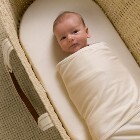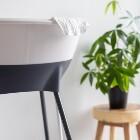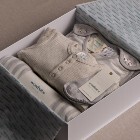8. Stick to your routine
If your baby has been in a strong, consistent routine at home, try to stick to it as much as possible. They’ll know it’s time for their nap and to expect bedtime after their usual nighttime routine. An overtired baby tends to sleep worse than a well-rested baby so keeping your routine the same means you’ll have a well-rested, happy baby (or at least, that’s the plan!).
If you’re travelling for a short time, with a minimal time difference, you may want to stick to your home times, but if the time difference is big and you’ll be away for a long time, it’s best to try and adjust as quickly as possible. Getting lots of natural daylight can help re-adjust your body clock more quickly.

























